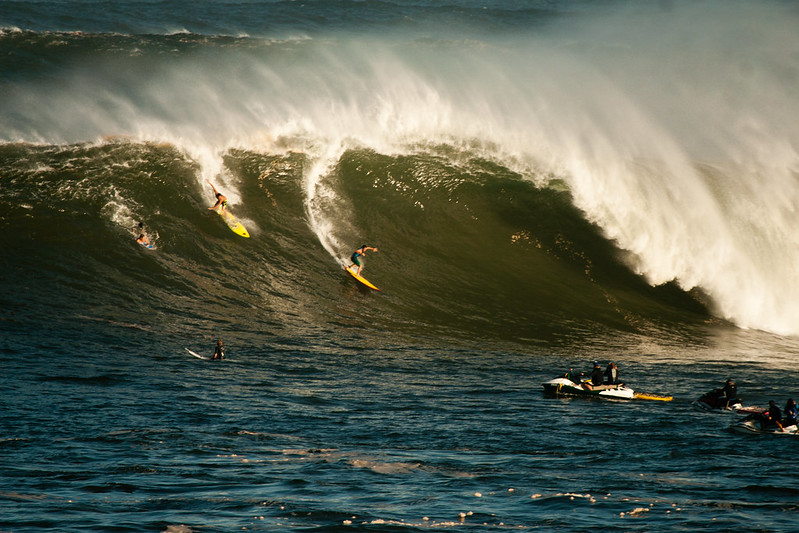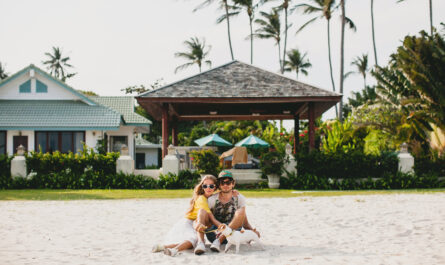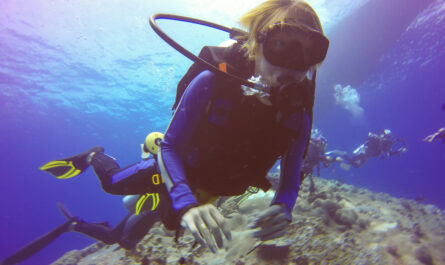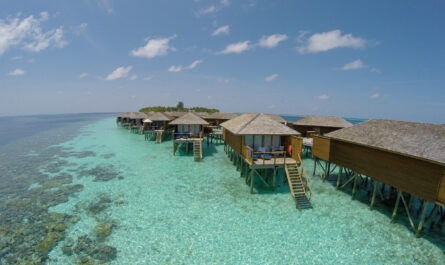Hawaii, with its stunning beaches, vibrant culture, and legendary waves, is a dream destination for surfers. Each Hawaiian island offers unique surf spots, catering to all levels of skill—from beginners catching their first wave to seasoned professionals seeking thrilling, high-energy breaks. The islands of Oahu, Maui, Kauai, and the Big Island are particularly famous for their surf culture, each offering distinctive waves and experiences.
This guide is designed for adventurers looking to surf the best waves in Hawaii, highlighting prime locations, best seasons, safety tips, local etiquette, and more. From the legendary Banzai Pipeline on Oahu to the mellow waves at Canoes Beach, there’s a wave for everyone in Hawaii’s ocean paradise.
1. The Legacy of Surfing in Hawaii
Before diving into the surf spots, it’s essential to appreciate Hawaii’s deep connection to surfing. Known as “he’e nalu” in Hawaiian, surfing was born in Polynesia and became an integral part of Hawaiian culture. Ancient Hawaiians saw surfing as more than just a sport; it was a spiritual practice and a way to demonstrate strength, agility, and mastery of the ocean. Chiefs, or ali’i, often displayed their status by riding the best waves on custom surfboards.
Hawaii’s surfing culture continued to evolve, especially in the 20th century when surfing gained global popularity. Today, surfing is not just a sport in Hawaii; it’s a way of life, and visitors are encouraged to respect the local culture, honor the ocean, and embrace the spirit of aloha when surfing these legendary waves.
2. Oahu: The Heart of Hawaiian Surfing
a) North Shore: The World’s Most Famous Surf Destination
Oahu’s North Shore is synonymous with surfing. Known worldwide for its powerful winter waves, the North Shore is home to legendary surf spots like Banzai Pipeline, Sunset Beach, and Waimea Bay. From November to February, professional surfers flock here to test their skills in waves that can reach over 30 feet.
- Banzai Pipeline: Often called simply “Pipeline,” this break is famous for its powerful, barreling waves that break close to the shore over a shallow reef. Pipeline is best left to experts due to its intensity and sharp coral below.
- Sunset Beach: Another iconic spot, Sunset Beach offers long, heavy waves that test even the most experienced surfers. Winter swells create powerful surf, making this spot popular for high-stakes competitions.
- Waimea Bay: Known as the birthplace of big wave surfing, Waimea Bay comes alive in winter, with waves reaching 30-40 feet. Only seasoned big-wave surfers venture here, as the power and height of Waimea waves are not for the faint-hearted.
b) Waikiki Beach: A Mellow Experience for All Skill Levels
On the southern shore of Oahu, Waikiki Beach is perfect for beginner and intermediate surfers. Waikiki offers gentle, rolling waves, ideal for learning and building confidence. Here, the iconic Duke Kahanamoku, the “Father of Modern Surfing,” first introduced the sport to the world.
- Canoes Beach: This beginner-friendly spot has soft, long waves, perfect for first-timers and those looking to ride gentle breaks. Local surf schools offer lessons here, and the waves are manageable year-round.
- Queens: Just next to Canoes, Queens offers a more challenging wave with faster breaks. This spot is popular among intermediate surfers looking for a fun and friendly wave without the intensity of the North Shore.
3. Maui: A Blend of Adventure and Relaxation
Maui’s diverse coastline provides a range of surfing experiences, from gentle waves suitable for beginners to exhilarating surf for seasoned riders.
a) Honolua Bay: An Iconic Right-Hand Point Break
Honolua Bay, on Maui’s northwest shore, is one of the island’s most revered surf spots. Known for its long, powerful right-hand point break, Honolua is best surfed in winter when the swells are at their peak.
Honolua Bay offers multiple takeoff spots, giving surfers the chance to experience long, winding rides. However, it’s crucial to note that Honolua Bay is a local favorite, and visitors should respect local etiquette. The bay’s beauty is complemented by its lush cliffs and crystal-clear water, making it one of Hawaii’s most scenic surf spots.
b) Lahaina Breakwall: A Great Spot for Beginners
The Lahaina Breakwall, located in Maui’s historic town of Lahaina, is a favorite for beginners. The waves here are gentle and perfect for learning. Local surf schools often bring students to this spot, where they can practice their skills in a relaxed environment.
For more experienced surfers, the Breakwall can provide fun, punchy waves, especially during south swells in the summer. The shallow, sandy bottom and consistent waves make it a fantastic choice for those just starting their surfing journey.
4. Kauai: The Untamed Surf Destination
Kauai’s raw beauty and untamed landscapes offer unique surfing experiences that feel more remote and adventurous than on other Hawaiian islands.
a) Hanalei Bay: A North Shore Gem
Hanalei Bay, with its stunning mountain backdrop, is the jewel of Kauai’s surf scene. The bay offers multiple breaks, with waves suitable for different skill levels. In winter, Hanalei Bay produces strong, challenging waves that attract experienced surfers. During the summer, the waves are smaller and more accessible to beginners.
The main breaks in Hanalei Bay include the Point, Pine Trees, and The Bowl. While the Point and the Bowl cater to advanced surfers, Pine Trees is a friendlier wave, suitable for intermediate surfers looking to challenge themselves.
b) Shipwreck’s Beach: A Thrilling Experience for the Bold
Located on the south shore of Kauai, Shipwreck’s Beach is known for its heavy shore break and fast waves. The surf here is intense and best suited for experienced surfers due to the powerful waves that break close to the shore. While not for the faint-hearted, Shipwreck’s provides an exciting challenge for those ready to test their skills.
5. Big Island: A Mix of Local Charm and Unique Surf Spots
The Big Island, also known as Hawaii Island, offers a unique surfing experience, blending volcanic landscapes with uncrowded waves.
a) Banyans: A Local Favorite
Banyans, located near Kailua-Kona, is a favorite among local surfers. Known for its punchy left-hand reef break, Banyans produces powerful waves that are best suited for intermediate and advanced surfers. With a tight-knit community, visitors should approach Banyans with respect for the locals.
b) Pine Trees: A Family-Friendly Spot
Pine Trees is a great option for surfers of all skill levels, including families. With multiple breaks that offer waves suitable for both beginners and experienced surfers, Pine Trees is a welcoming beach where everyone can enjoy a day in the waves.
6. Surfing Seasons in Hawaii: The Best Time to Catch Waves
Hawaii’s surfing seasons vary by region due to its unique geography. Here’s a quick guide to help you plan:
- North Shore (Oahu and Kauai): Winter months (November to March) bring massive waves and powerful swells. This is the prime season for professional surfers and competitions.
- South Shore (Oahu and Maui): Summer months (May to September) produce smaller, consistent waves, making it ideal for beginners and casual surfers.
- East and West Shores: These areas experience waves year-round but are more susceptible to trade winds. East shores are generally rougher, while west shores provide cleaner waves.
7. Understanding Local Surf Etiquette: Respecting the Culture
Respect is at the core of Hawaiian surfing culture. Here are some essential etiquette tips for surfing in Hawaii:
- Respect the Locals: Hawaiians take pride in their waves and culture. As a visitor, be mindful, courteous, and avoid aggressive behavior in the lineup.
- Don’t Drop In: Respect the “right of way” rules. The surfer closest to the peak of the wave has priority.
- Observe Before You Paddle Out: Watch the break and understand the lineup before paddling in.
- Leave No Trace: Respect the environment by keeping beaches clean and leaving nature undisturbed.
8. Essential Tips for Safe Surfing in Hawaii
Surfing in Hawaii is a rewarding experience, but safety should always be a priority:
- Check Conditions: Hawaiian waves can be unpredictable, especially during winter. Always check surf reports and forecasts.
- Beware of the Reef: Many Hawaiian surf spots break over sharp coral reefs. Know the conditions of the spot you’re surfing and take caution.
- Stay Hydrated and Protected: The Hawaiian sun is intense. Use reef-safe sunscreen and drink plenty of water.
- Understand Rip Currents: Rip currents can be strong. Familiarize yourself with how to spot and escape them before hitting the water.
9. Surf Schools and Gear Rental: Getting Started
If you’re new to surfing, Hawaii offers a wealth of surf schools and rental options to make your experience enjoyable. Waikiki on Oahu is one of the best places to learn, with schools that offer beginner lessons led by experienced instructors. Maui, Kauai, and the Big Island also have surf schools in popular beginner-friendly spots.
Many surf schools provide boards, rash guards, and guidance, making it easier for beginners to catch their first waves safely. Renting a board is also a convenient option, with shops located near most surf beaches.
10. Beyond Surfing: Exploring Hawaii’s Adventure and Culture
While surfing is a must, Hawaii offers countless other activities that complement the surf experience:
- Hiking: Hawaii’s landscapes feature scenic hikes, such as the Na Pali Coast on Kauai, Diamond Head on Oahu, and Haleakala on Maui.
- Snorkeling and Diving: Discover Hawaii’s marine life by snorkeling or diving at popular spots like Molokini Crater in Maui or Hanauma Bay on Oahu.
- Cultural Sites: Engage with Hawaiian culture by visiting historical sites, including Pu’uhonua o Honaunau on the Big Island or the Iolani Palace on Oahu.
Conclusion: Embrace the Spirit of Aloha on Hawaii’s Waves
Surfing in Hawaii is an unforgettable adventure that combines the thrill of riding world-class waves with the beauty and culture of the islands. From the legendary breaks of Oahu’s North Shore to the tranquil waves of Waikiki, each surf spot offers a unique experience that reflects the spirit of Hawaii.
Whether you’re a seasoned surfer or a beginner, surfing in Hawaii is an invitation to connect with the ocean and embrace the aloha spirit that defines these islands. With respect for the environment, appreciation for the culture, and a sense of adventure, you’ll find that surfing in Hawaii is a journey of discovery, joy, and connection.



